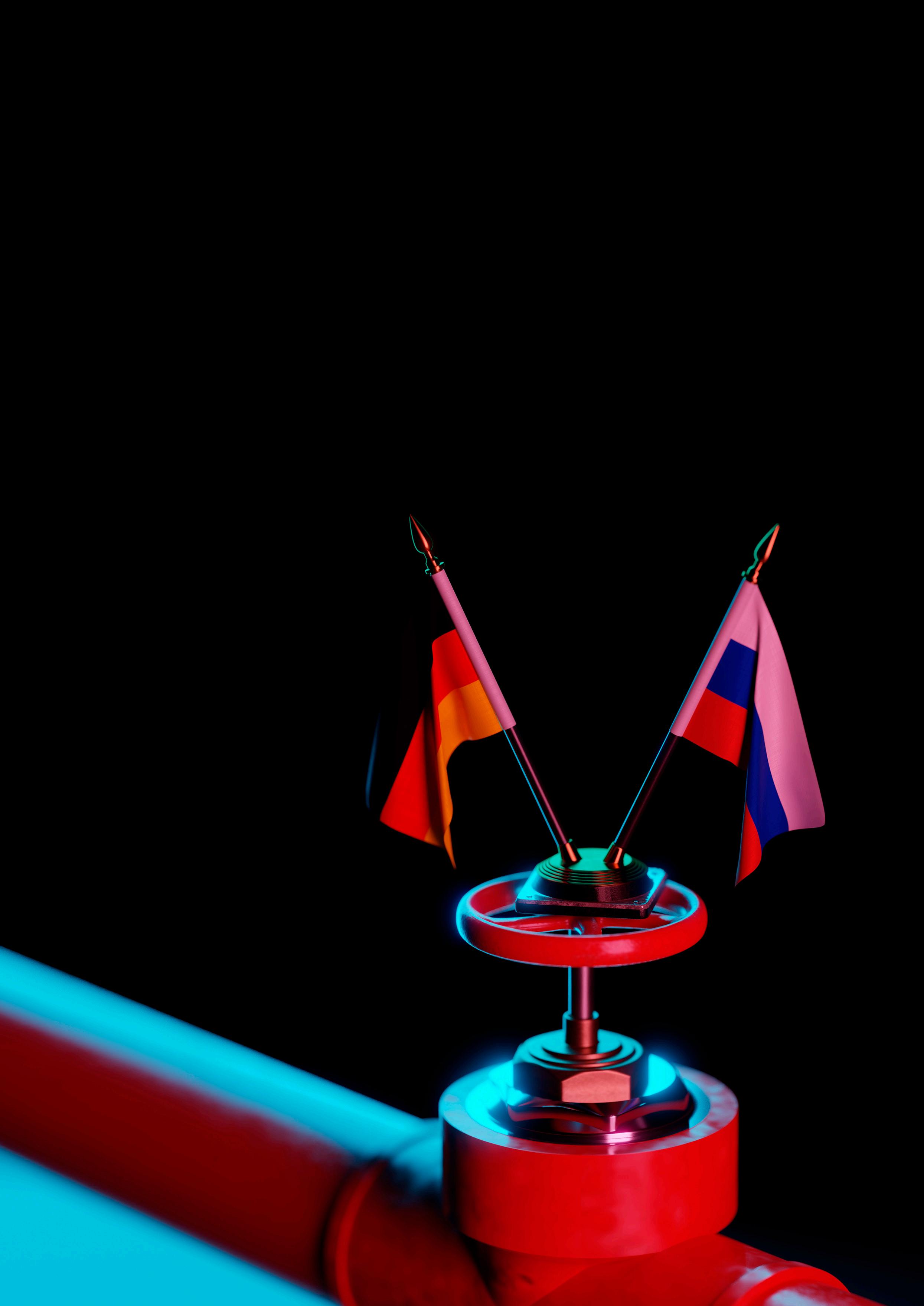
9 minute read
Solving tomorrow’s failures today – evolution in the oil and gas industry
Tereza Dvorakova, Europe & Eurasia Intelligence Analyst, AKE International, UK, discusses key commodity transport infrastructure running through Ukraine.
The Soviet Union first transported gas across the Cold War divide in 1968 – destination Austria. Indeed, since the end of World War II, pipelines have evolved as economic arteries transgressing borders and ideologies; the economic need to buy and sell overriding geopolitical divides. Until now, that is.
Fast forward half a century, Austria – like many of its neighbours – is heavily dependent upon Russian gas imports. Its Baumgarten hub also serves as a major distribution point for Russian gas deliveries, from multiple directions. Unsurprisingly, the country harbours significant economic concerns around the ongoing security of its gas supply. In the current climate of conflict, Vienna has been amongst the most vocal European opponents to sanctions on Russia. Yet, Austria is not the only longterm dependent on Russian energy imports. Germany too has sought to build economic interdependence with Russian gas. Soviet gas supplies accounted for more than 30% of West German gas imports before the USSR’s collapse and by 2021 more than 60% of Germany’s gas supplies would come from Russia.
While Nord Stream 2 had, until February 2022, been heralded by Berlin as an apolitical energy supply solution, it had always been opposed by Ukraine and Poland amid fears
of Russia entrenching its European energy advantage – and missing out on lucrative transit fees.
As the fear of industrial paralysis and spiralling energy costs impact Europe, Ukraine remains in the symbiotic crisis of war and economic shock. Alleged war crimes prosecuted by Russian forces have prompted calls for economic and political retribution across the West. Ukrainian President, Volodymyr Zelensky has called for fresh sanctions to help prevent further atrocities like those seen in Bucha, and has accused those countries that continue to buy Russian oil of “earning their money in other people’s blood”.
Yet, despite the focus on energy sanctions against Moscow, there has been less scrutiny of the pipelines that criss-cross Ukraine. What impact has the war had on this infrastructure? Ukraine’s role as a junction of key energy pipelines has long been at the heart of tensions with Moscow. Although Russia and Ukraine are fighting their second ground war in the last eight years, early tensions flared over gas transit prices already in the mid-2000s.
Russia has spent the last 15 years building alternative pipelines – particularly for natural gas – to go around Ukraine, with the Turk Stream and Nord Stream projects providing new routes to Europe. Nord Stream 2 – now blocked by Germany (despite effectively being complete) – was meant to be the final success in this strategy.
Notwithstanding Nord Stream 2’s cancellation, Russian gas continues to flow through Ukraine. Much of this enters via Ukraine’s northeast, via the Soyuz (Union) and Bratrstvo (Brotherhood) pipelines that run through portions of Kharkiv and Luhansk Oblasts; regions that are presently witnessing daily clashes between Russian and Ukrainian forces.
There is a slightly lower risk of disruption to the other main Russian gas pipeline that runs via Ukraine – the Progress pipeline – which enters via Sumy Oblast, a region from which Russian forces withdrew in early April.
However, the key pipeline route – the Druzhba 2 pipeline which enters Ukraine’s Zhytomyr Oblast after passing through Belarus – is at lower risk than any of the other pipeline routes. It is largely routed through territory that has been almost entirely free of fighting. Ukraine’s other two Russian oil import pipelines, conversely, pass through the town of Lysychansk in Luhansk Oblast, which has seen daily clashes since March. Russia aims to annex this area in its renewed offensive in the Donbas region, launched on 18 April.
Russia’s initial invasion – which included Chernihiv, Kyiv, Sumy and the eastern part of Zhytomyr Oblasts – does indicate that Russia’s war aims should not be underestimated and that even the Druzhba 2 pipeline could end up at risk.
Not only oil and gas Oil and gas pipelines are not the only pieces of key commodity transport infrastructure running through Ukraine and ultimately supplied by Russia. Another one is the Togliatti-Pivdenny ammonium pipeline, the world’s longest fertilizer supply network. It runs directly through Kharkiv Oblast to the north of its capital city of Kharkiv in areas that have seen sustained clashes throughout April.
Ukraine’s other major ammonia facility is in Horlivka, located on the frontlines of the conflict for years in territory controlled by Russian forces and the Kremlin’s proxies. It is supplied via Russian-controlled territory but it has long been offline given the proximity of the fighting.
Moscow has in recent years sought to substitute its Ukrainian ammonia export routes by building a new export terminal in Taman. This is one area where Russia should be fairly insulated from sanctions given its domestic experience in such work. However, although initially scheduled to launch in 2020, no formal opening date has been announced.

Bob Gallagher and Benjamin Fuentes, Thermo Fisher Scientific Inc., USA, believe embracing technology is the key to tackling pipeline failures.
The oil and gas industry remains paramount to our way of life, so any threat or action that disrupts product supply can have severe knock-on effects. The Colonial Pipeline ransomware cyberattack in May 2021 was a stark reminder of this, and made the industry – and indeed, the wider population – more aware of the serious implications of pipeline failures to everyday life. It forced a swift policy change for pipelines considered to be critical infrastructure and pressured the decision makers of many companies to implement stricter measures to counter both emerging and recognised threats.
This incident is just one example of the type of threat that could lead to pipeline failures, and highlights the need for the sector as a whole to evolve and start exploring not only fresh oil and gas supplies, but also innovative solutions that can help mitigate operational risks.

The unclear yet present danger The Colonial Pipeline incident is a pertinent example of the genuine threat that cybercriminals pose to the oil and gas industry, and showcases the intelligence and speed at which they can operate. The hackers forced operations to shut down after gaining access to the company’s central server, which controlled the volume and direction of the gasoline and fuel in the pipeline. A joint effort by the Colonial Pipeline Company and the FBI restored operations in less than a week, but only

Figure 1. Flow computers increase the ability to monitor instrument performance, flow throughput and other metrics to help avoid costly unplanned downtime.
after being coerced into paying the ransom (the majority of which was later recovered). However, it wasn’t just the company that felt the impact, with the ramifications quickly spreading across the east coast of the US, an area that relies on this supply line for half of its petroleum. Airports scrambled to find alternative supplies – forcing airlines to change their flight schedules – while filling stations were overrun with the public panic-buying gasoline, causing massive shortages and short-term fuel price inflation.
The energy sector is certainly no stranger to cyberattacks. Still, this incident highlighted the seemingly porous nature of current cybersecurity protocols. It initiated an immediate response from the Transportation Security Organisation (TSA), which now oversees anything considered critical infrastructure, ensuring a minimum level of security to minimise the risk to key fuel supplies, and the potential downstream havoc it could cause. The TSA is just one of a collection of organisations – also including the Federal Energy Regulatory Commission, the American Petroleum Institute, and the American Gas Association – that govern the industry. However, there are still far fewer mandates in existence that oversee the daily operations of a pipeline.
Many in the industry hope that the Colonial Pipeline attack could be the event that triggers the start of a new era, leading to more widespread recognition of the various challenges currently faced, and the employment of innovative solutions to address them.
A complex web of challenges Cybersecurity is just one element challenging the industry, and pipeline failures can be caused by a multitude of factors, mainly due to the complexity and large geographical spans of these operations. A failure could occur anywhere along a pipeline system, with product lost and unaccounted for (LAUF) – due to leakage or inaccurate delivery – causing delays or, worse, environmental issues. The remote location of many of the stations makes them particularly vulnerable to natural disasters and extreme weather, which can cause power outages and suspension of operations, again affecting supply. Furthermore, human error – inaccurate readings or inputs into a device – is an inevitable factor that is familiar in any industry.
Industry-transforming solutions These issues are common causes of pipeline failure, but the industry is generally slow to adopt new solutions to address them. Many companies invest in upgrading their physical pipelines – replacing old and damaged pipes – but still rely heavily on legacy technologies. The implementation of new technologies, such as smart devices capable of transmitting real-time data across the globe, have transformed a wide range of industries – from manufacturing to agriculture – but their uptake in the oil and gas sector is markedly slower.
As a result, there is still a large amount of instrumentation in service that doesn’t have an ethernet connection, built-in security, or the ability to process and transmit data. Maybe the Colonial Pipeline incident, which heightened cybersecurity protocols, will prompt companies to look at the solutions available to address not just data and network security, but also other common causes of failures.
Data: the master key Access to more significant data, and the better management of it, has the potential to revolutionise the industry. The flow computer, for example, certainly isn’t a novel device, but its ongoing evolution is increasing its impact on the industry. Its original purpose was to calculate volumes going through particular sites, and then transmit the data to a central location for staff to monitor remotely.
Over the years, the amount of data being generated has increased significantly, along with the ability to share it. More importantly, various access and control measures have been introduced, such as remote valve access to control pressures. This has transformed a process that previously relied on personnel in a central location identifying a problem, and then calling a technician to travel to the site to fix it. Instead, technicians now have the technology at their disposal to log into a unit remotely, accessing the relevant data and either adjusting the system to compensate, or assessing what the issue might be before traveling to the site. This is not only far more efficient – cutting out the intermediary in the office – but it also saves valuable time, and helps to ensure the technician arrives onsite with the relevant parts and information to quickly rectify the problem.
Crucially, the quality of data has also evolved, and can now include ‘health status’ information on factors that can affect the capacity of the device, including temperature and processing speeds. Access to this data can give technicians monitoring these sites the information needed for a proactive approach, identifying and preventing some forms of pipe failure before they occur.
Prevention is the best cure The emerging field of predictive analytics is likely to take the industry by storm. Transitioning from reactive to proactive maintenance has the potential to unlock previously






